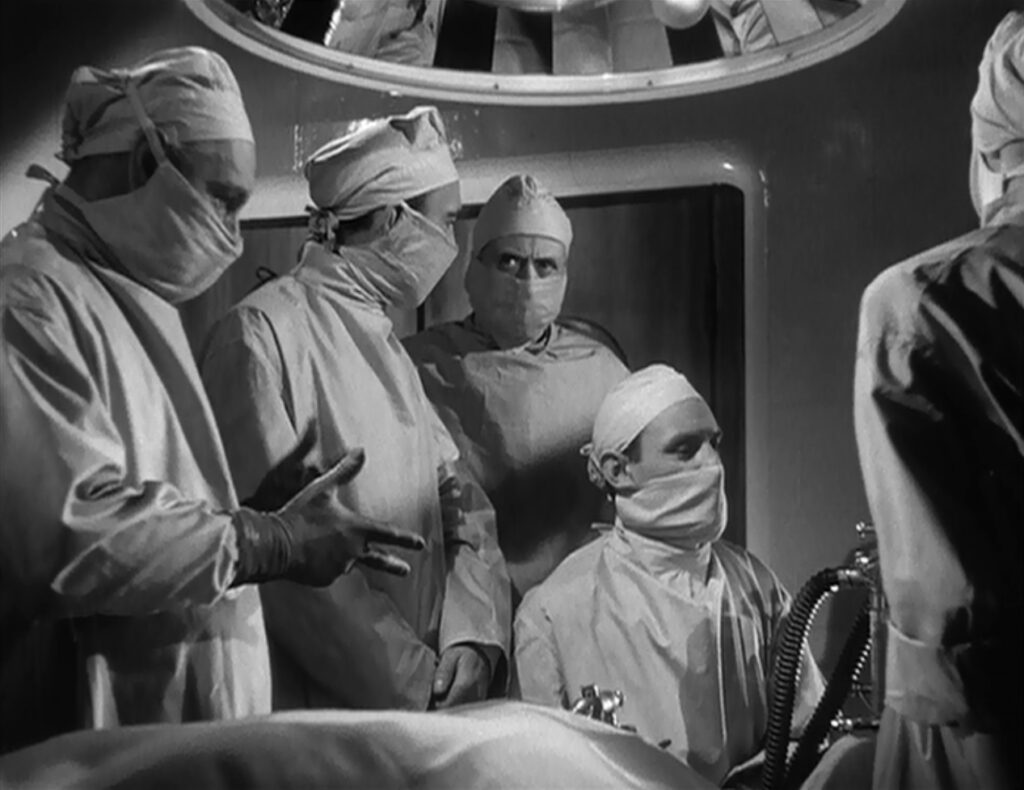
Green for Danger
1946, directed by Sidney Gilliat
Most of us don’t often think of movies as therapy, and it’s probably just as well if their therapeutic qualities remain hidden from consciousness while they work their effects. British audiences in 1946 surely would have been satisfied to think of Green for Danger as a witty murder mystery that happened to take place during the Nazis’ V-1 bombing campaign two years earlier. But the wartime setting is more than a convenience, and the story – set appropriately in a hospital – should have had a healing effect on postwar viewers, even as it thrust them back into recent memories of terror.
The V-1, alternately known as a “doodlebug” or “buzz bomb”, was a primitive rocket mounted on plywood wings. Almost laughably lacking in accuracy, they were simply pointed at England and left to fly until their fuel ran out, whereupon they would fall and explode. Their utter randomness was a fortunate shortcoming, but it also made the bombs a psychological weapon because they were so unpredictable – even rural areas were threatened.
Green for Danger is a snapshot of this frightful time. The noises and shock waves of doodlebugs were never too far away. Many Londoners, like Nurse Woods, fled to the countryside to escape frequent bombing raids, whose damage was more predictable and more certain than buzz bombs. Most men of fighting age were off to war, except for those needed on the home front like Dr. Barnes and Dr. Eden. Higgins the postman, Dr. Purdy, Dr. White, and Inspector Cockrill were all old enough to be exempt. Everyone felt the stress of war, and most got through it, but a few snapped, like Nurse Sanson, and others, like Higgins or Sister Bates, became casualties. In its generalities the scenario would have been broadly familiar, making the hospital a nice microcosm of England.
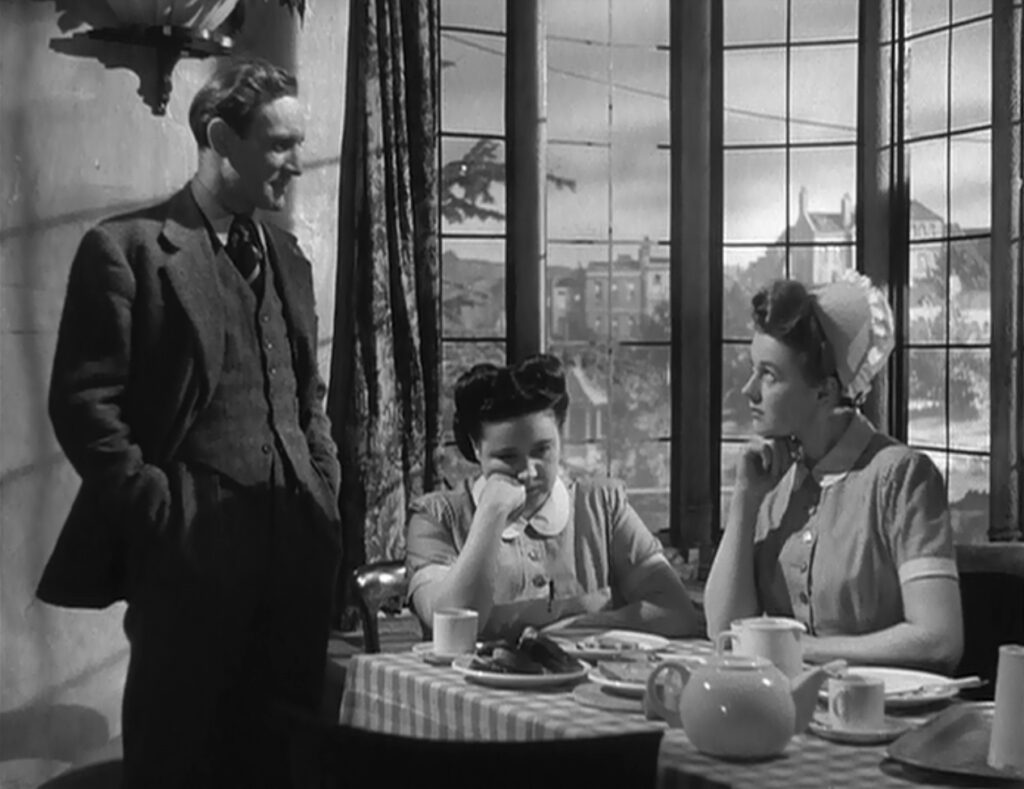
The first thing we hear of Heron’s Park Hospital is that it was housed in a requisitioned Elizabethan manor. This cozy historical setting ties the whole experience back to a shared national “Golden Age”, which is strange because the hardships of World War II would have felt like the opposite of a Golden Age when traumatic memories were so fresh. Nevertheless Green for Danger reminds viewers that life went on during the war, and that even then it had its compensations. More than that, it was a time worth treasuring, and 1946 was probably a good moment to begin to reassess the wartime experience.
Each character is distinguished by some particular shame or regret. Nurse Woods is ashamed that her twin sister has betrayed the country by lending her voice to Nazi radio propaganda. Nurse Sanson is tortured by the failure to rescue her mother from bomb rubble. Nurse Linley knows that she’s broken the trust of her fiancé Dr. Barnes. Barnes, although innocent of wrongdoing, feels defensive about the loss of a patient three months earlier, and now he fears a repeat of the situation. Dr. Eden, though carefree by nature, is less than forthright about his womanizing. Sister Bates is driven almost mad by the loss of Dr. Eden’s affections. Hospital head Dr. White’s inflated concern for his reputation hints at some hidden insecurity. Tying the story together is Inspector Cockrill’s case report, which doubles as the embarrassed resignation letter of a proud Scotland Yard detective who has bungled an investigation, even if he did solve the mystery.
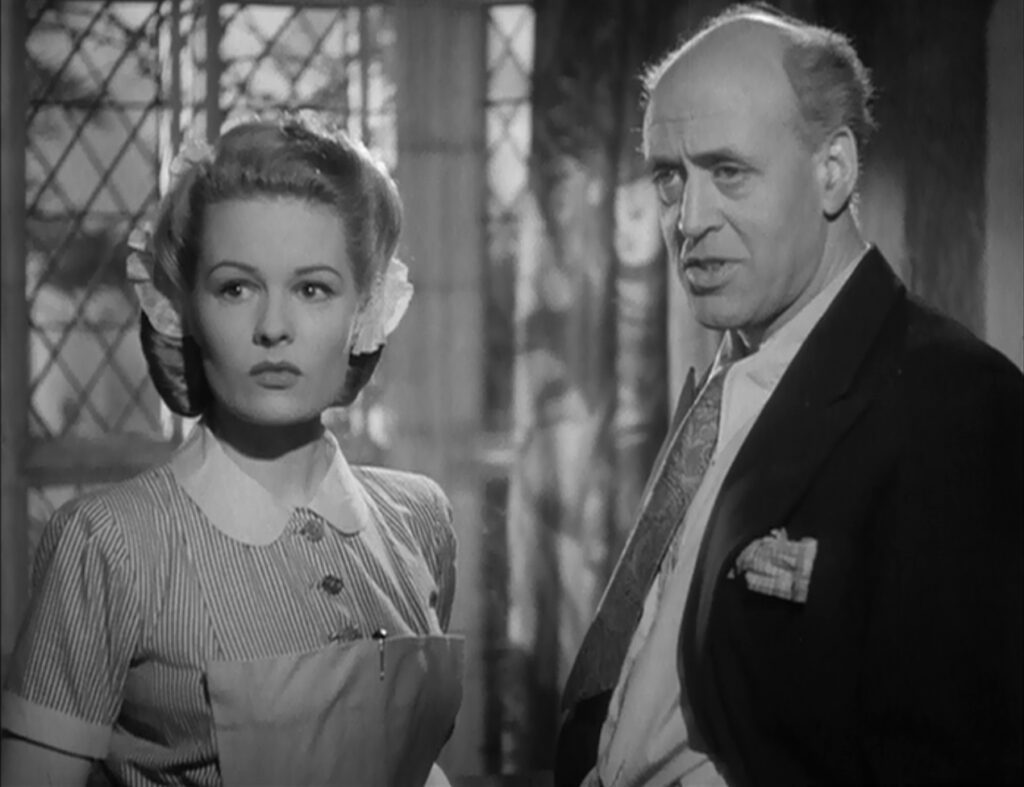
Together this array of characters captures the spectrum of anxieties and self-reproaches that must have haunted the British well past the war’s end. Too many war movies paint pictures of unblemished heroism, but in reality few people get through a war, or through life for that matter, without some gnawing regrets. For all their blatant imperfections, each of these characters is convincingly human, their faults made understandable – with the unfortunate exception of the murderer, whose motive isn’t quite as persuasive as the movie should have made it. At any rate, postwar audiences would doubtless have been comforted seeing their own variants of embarrassment put in a charitable perspective.
The movie’s greatest joke, during the inspector’s interrogation of Dr. Barnes, touches on this same idea of imperfection. “I gave him nitrous oxide at first to get him under.” “Oh yes, the stuff the dentist gives you, hmm? Commonly known as laughing gas?” “Used to be. Actually the impurities cause the laughs.” “Oh. Just the same as our music halls.” Green for Danger may not be as vulgar as England’s musical theater, but it too relies on impurities of a sort.
More than anyone else, Inspector Cockrill is made endearing by his imperfections. He usually exhibits total command of the hospital staff, making light of their inadequacies, proud of the hushed fear he strikes in everyone, yet he’s often reduced to silliness, his dignity shattered as he hides clumsily from doodlebugs or finds himself forced to confess his failures. When he boasts of his “accustomed energy” we see him leafing lazily through some papers in bed. In one delicious private moment we catch him in the early pages of a mystery novel. He guesses the solution, flips to the end to check it, and his smug expression melts away. “Must be getting old,” he tells himself. Green for Danger skips the usual heroics of detective mysteries and war movies.
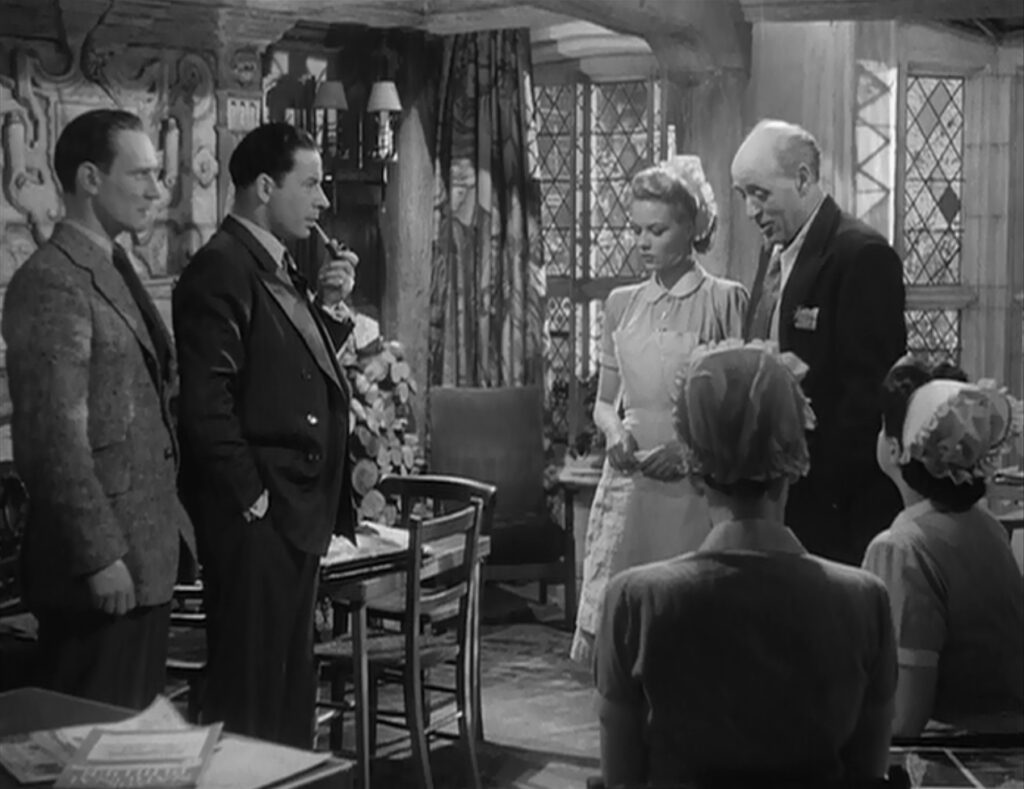
Cockrill may be humbled by his mystery novel, but the movie never asks its viewers to solve a murder mystery. Instead it absolutely gives the secret away halfway through. When the inspector first gathers the suspects to hear their alibis, he describes Sister Bates’ last moments in vivid detail to impress his seriousness on everyone. A close-up of Nurse Sanson then cuts to her memory of the victim’s horror, followed by a match cut back to Sanson in hysterics. This rapid flashback could be taken as Sanson’s imagination, at least before we know better, but nowhere else does the movie show anything non-factual. In fact the movie is tipping its hand, revealing the guilty party just as the investigation begins.
This flashback does more than reveal the killer. The match cut draws an equation between Nurse Sanson and her victim, and she screams in place of Sister Bates as if she’s taken the woman’s anguish on herself. Although she commits two murders and risks serious harm to Nurse Linley, Sanson is hardly the cold-blooded murderer Inspector Cockrill claims is among them. She’s a piteous character, and her downfall can hardly be the ending to satisfy viewers. Cockrill’s typewritten report frames the movie, telling us that Green for Danger is a story of failure, but the last line, “I feel I have no alternative, sir, but to offer you my resignation, in the confident hope that you will not accept it,” indicates that it’s also a story of forgiveness.
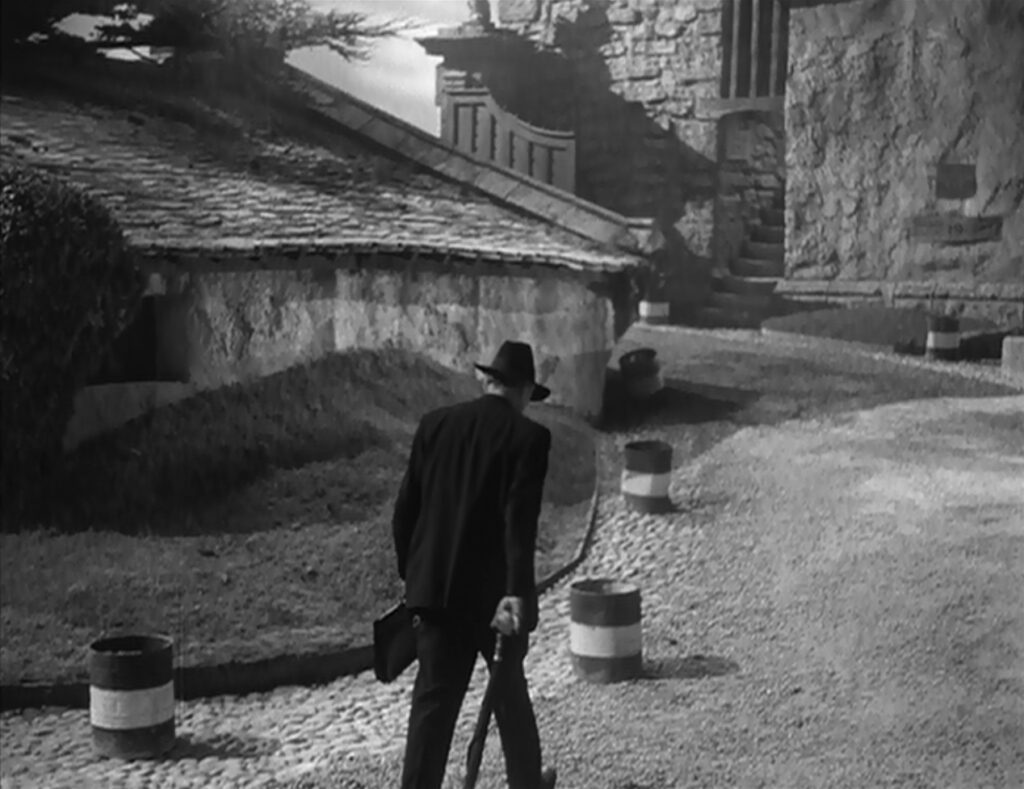
A typical murder mystery, whether a detective novel or a who-done-it movie, turns a passive spectator into an active participant who might just solve the case before the final revelation. Green for Danger is different. Instead of asking us to play God, to judge the characters’ guilt or innocence, it asks us to look at each of them with a depth of understanding that should lead to forgiveness. The movie encourages the British both to forgive themselves and to forgive their fellow countrymen for their failings during the war.
At Heron’s Park Hospital, anaesthesia is administered using a balanced mixture of three gasses: nitrous oxide in a black cylinder, oxygen in a black and white cylinder, and carbon dioxide in a green cylinder. Green for Danger offers its own version of anaesthesia to the British, easing the trauma of the recent war with a balance of comedy (nitrous oxide), life (oxygen), and danger (carbon dioxide). The three happen to correspond to Shakespeare’s genres of comedy, history, and tragedy, and the film clearly wishes to uphold the peculiar virtues of the British character, particularly in the model of Inspector Cockrill. Still there’s an irony about the movie’s method of anaesthesia – it seeks to comfort its audience, not as a narcotic, but by increasing the patient’s awareness.
CONNECTIONS:
Dead of Night – Therapy for lingering trauma in post-WWII Britain
Spellbound – Hospital setting as a metaphor for national healing after WWII; guilt revealed early